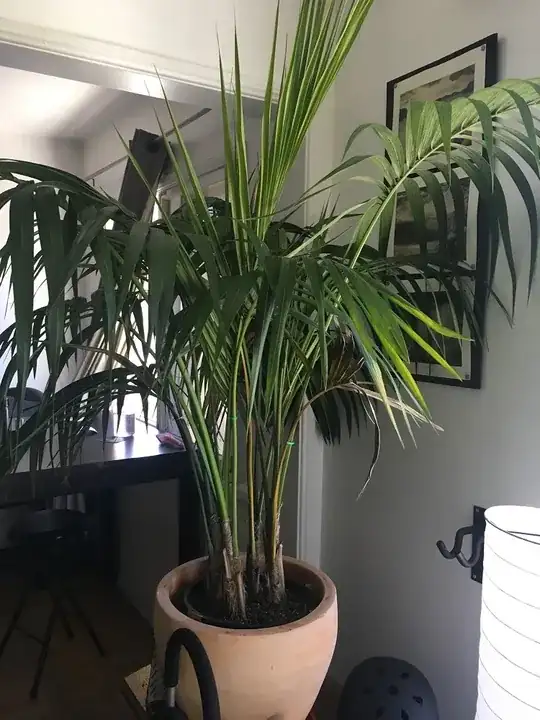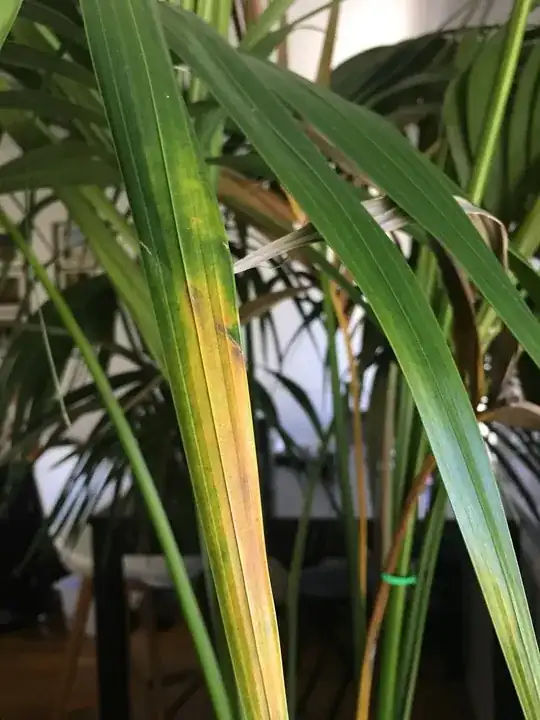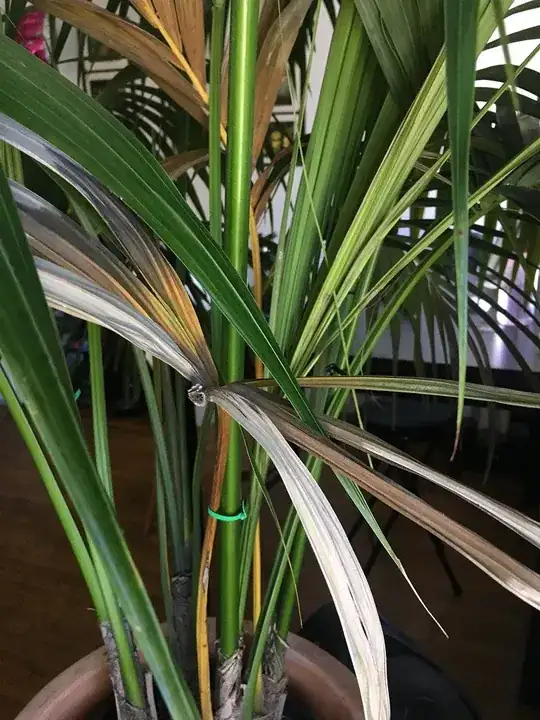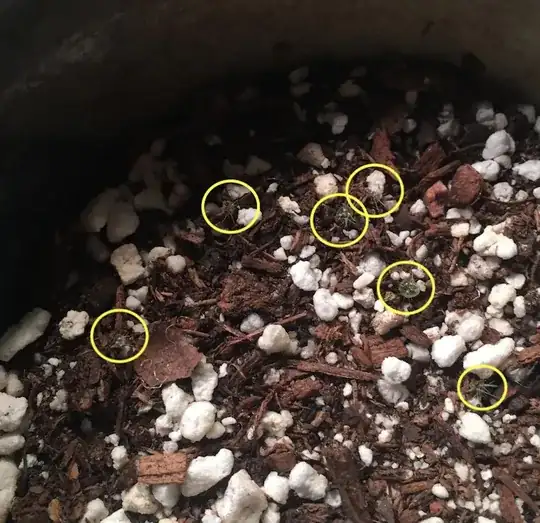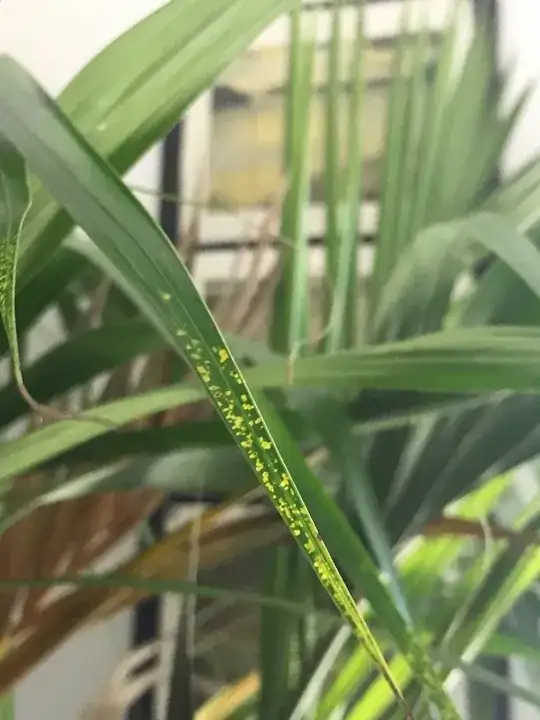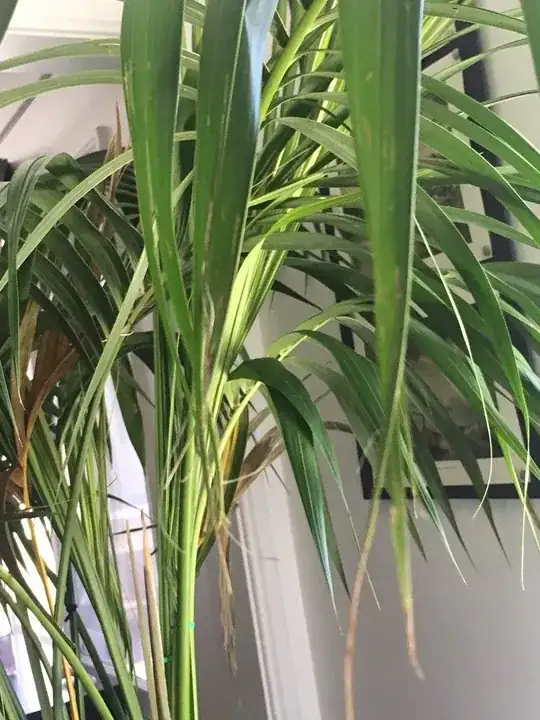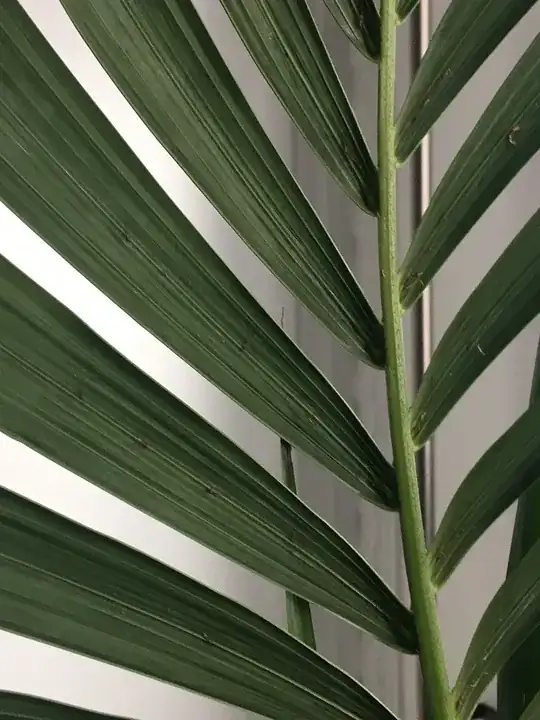First, you should know that palm trees over time shed old fronds. They first turn to yellowy-brown, before coming completely brown.
If a frond suddenly turned brown, you most likely have a watering issue. To be honest I am not 100% sure what you mean by, 'until the first 1-2 inches of soil feels wet' So, I will cover watering your palm tree.
Contrary to most people's beliefs palm trees do not like to be dry. They like to be moist but not wet and in very well-draining soil. If you are using a peat and perlite mix or coconut coir and perlite blend, it is best to add additional perlite to the soil. Perlite helps add drainage, as you have probably seen palms grow in soil that drains very quickly. Palms do not like being wet for long periods of time. You do not want you palm sitting in water.
When you water, give it water until water comes out of the bottom holes. (the pot must have bottom holes!) The next time you think it is time to water again, you will want to insert a bamboo barbecue skewer into the soil. Leave it in the pot for 30mins or longer. Then pull it out and look at it and feel it. If it is wet, it is not time to water, you want to check again in a few days. It is not good to follow a set schedule, because sometimes the palm will use more water than others, so you will need to go by what the skewer tells you. If the soil is bone dry, you have waited too long and need to water right away.
If you are using high-peat soil and it goes completely dry it will repel water. Meaning the water will come out of the bottom immediately. Wait 10 mins and try again. This time the peat should absorb the water. If you add lots of perlite to your peat mix, it will be more likely to absorb water when dry than a mix that is heavy in peat and light in perlite.
Lighting; It is great you have it out of direct sunlight. Most indoor palms do not light direct light, but they do like lots of light, so you need to move yours closer to the window, where it can have bright light most of the day. If you can not bring it closer to the light, then invest in a grow light for your palm. Most grow lights in summer should be on for 16-18 hours and in winter for 12-14 hours.
To recap; Bright indirect light, moist, but not wet, well drained soil, and only water when the skewer indicates its time to water.
